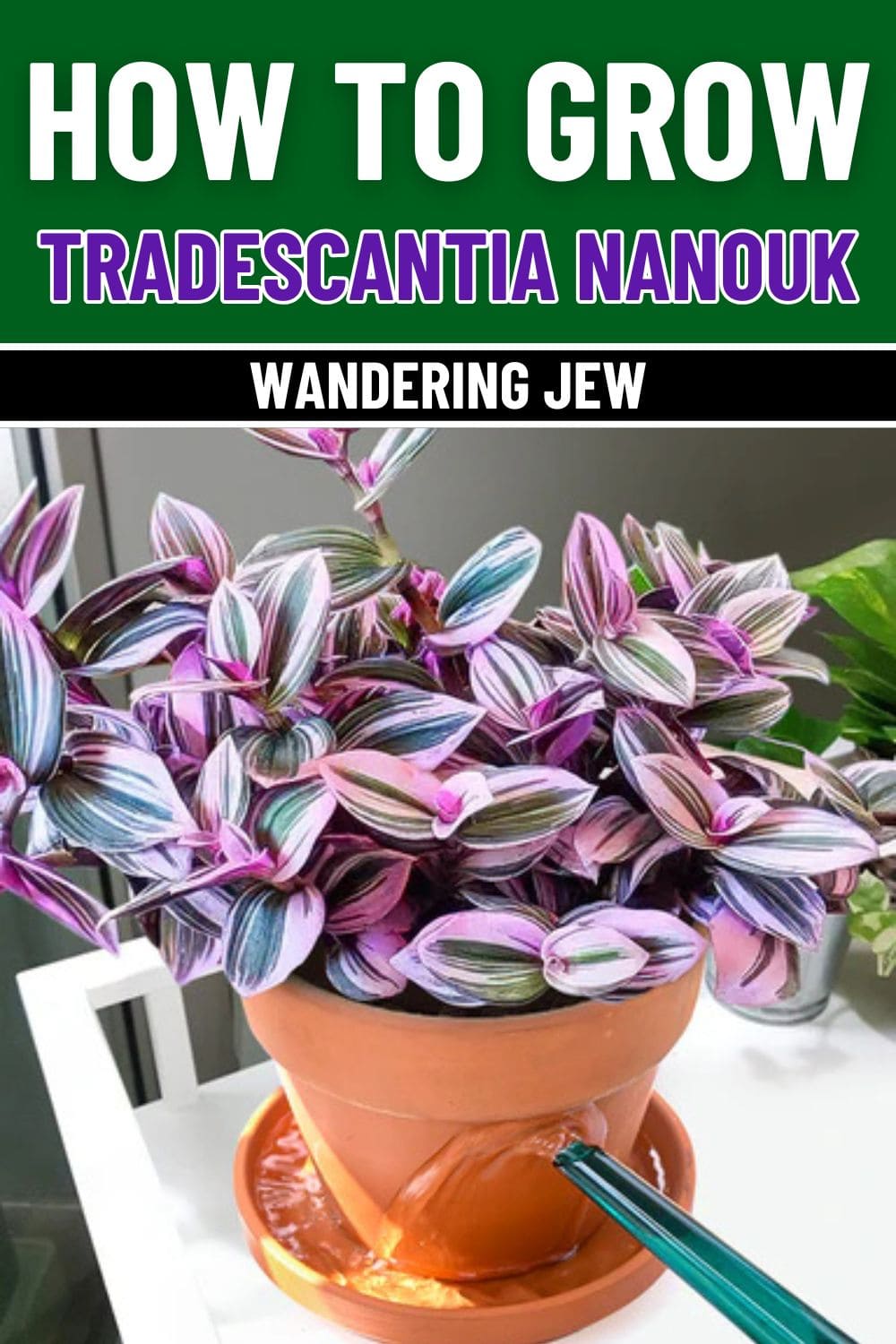If there’s one houseplant that never fails to impress, it’s Tradescantia Nanouk.
The first time I saw this plant, I was immediately drawn to its unique color, gorgeous pastel purple and pink streaks running across thick, slightly fuzzy leaves. It looked almost unreal, like something out of a painting.
After growing it for a while, I realized that not only is it stunning, but it’s also incredibly easy to care for if you know what it needs.
Getting to Know Tradescantia Nanouk
This plant, also known as Fantasy Venice, is a relatively new variety of Tradescantia, bred specifically for its bold colors and strong growth. It originated from the Tradescantia albiflora family, which is known for its trailing vines and fast-growing nature.
Unlike some other Tradescantia varieties, Nanouk has thicker stems and a more compact growth habit, making it perfect for hanging baskets, shelves, or even as a ground cover in warm climates.
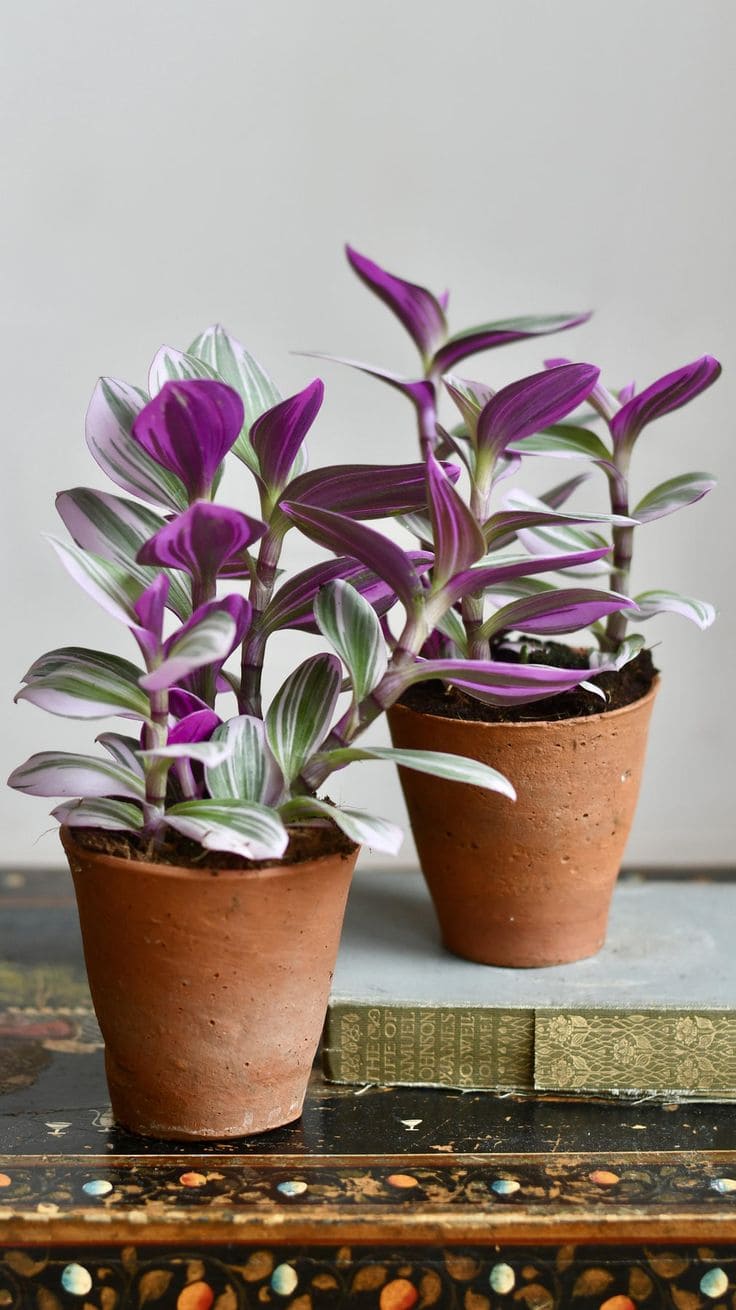
One of the best things about this plant is that it thrives indoors and outdoors, provided it gets the right conditions.
It’s a low-maintenance beauty that grows quickly, making it an excellent choice for beginners or anyone looking to add a pop of color to their home.
1. Lighting – The Secret to Bold Colors
If you want your Tradescantia Nanouk to look its best, light is everything.
Too little light, and the stunning pink and purple variegation fades into a dull green. Too much direct sun, and the leaves can scorch. I’ve found that bright, indirect sunlight works best. A
spot near an east- or west-facing window usually does the trick. If you only have a north-facing window, supplementing with a grow light can help maintain those vibrant hues.
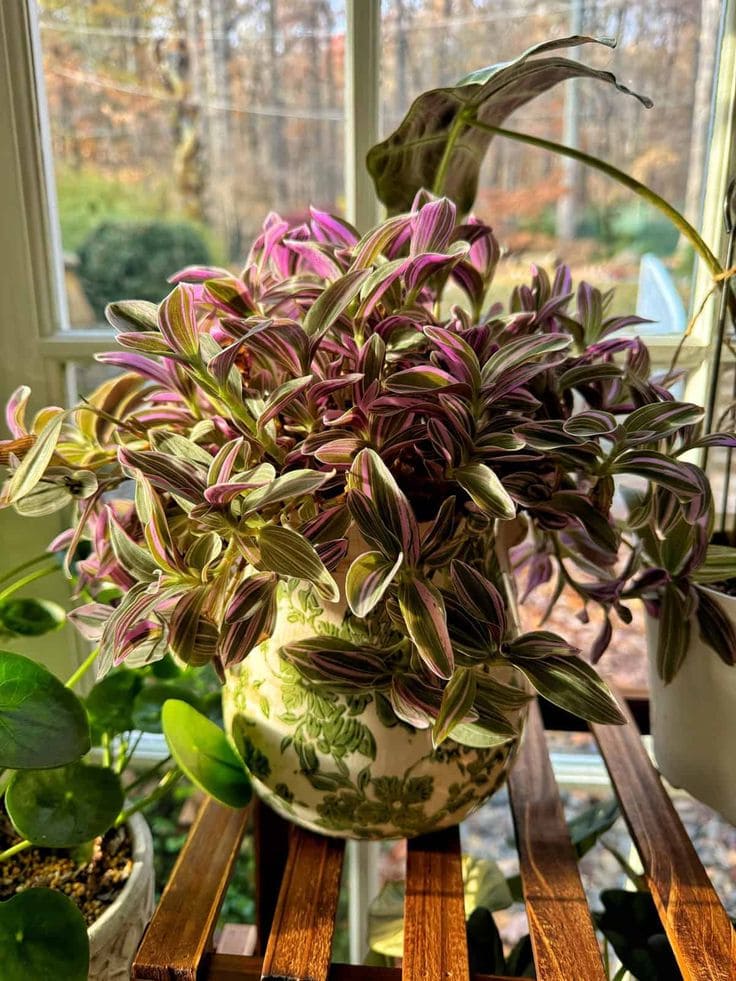
When I first got my Nanouk, I made the mistake of placing it in a dimly lit corner, thinking it would be fine like my pothos.
Within weeks, the beautiful colors started fading. Once I moved it to a sunnier spot, the transformation wasincredible, the pinks and purples became richer almost overnight.
2. Watering – Less Is More
If you tend to overwater plants, this one will teach you a lesson quickly. Tradescantia Nanouk doesn’t like soggy roots, and too much moisture can lead to rot.
I stick to a simple rule: water when the top inch of soil feels dry. During warmer months, that’s usually once a week, but in winter, I cut back to every two weeks since the plant isn’t actively growing.
One trick I use is to lift the pot before watering, if it feels light, it’s time to water. If it’s still heavy, I wait a few more days. The thick stems store some moisture, so the plant is quite forgiving if you forget to water it for a little while.
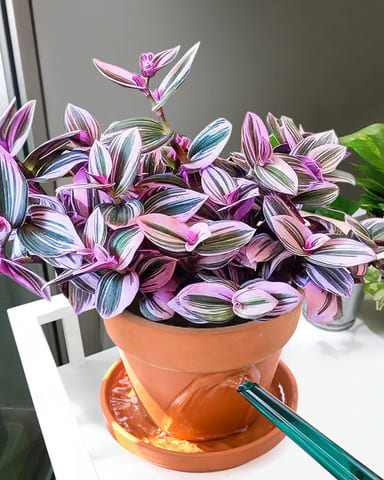
3. Choosing the Right Soil
A well-draining soil mix is key to keeping your Nanouk happy. Regular potting soil alone holds too much moisture, which can cause root rot.
Instead, I mix potting soil with perlite or orchid bark to improve drainage. You can also use a succulent or cactus mix, which tends to be lighter and prevents water from sitting around the roots for too long.
4. Humidity and Temperature – Creating the Perfect Environment
This plant loves humidity, but it’s also surprisingly adaptable. If your home is dry, especially in winter when the heater is running, you might notice the leaf tips browning slightly.
A simple fix is to place a small humidity tray near the plant or mist it occasionally. I’ve also found that keeping it near other plants helps create a more humid microclimate.
As for temperature, anything between 60–80°F (16–27°C) is ideal. If you keep it outdoors, make sure to bring it inside before temperatures drop below 50°F (10°C), as it won’t tolerate cold weather.
5. Pruning and Propagation – Keep It Full and Lush
Tradescantia Nanouk grows fast, and if you want to keep it looking full, pruning is essential.
Every few weeks, I pinch back any long, leggy stems to encourage bushier growth. The best part? Those cuttings can be used to grow new plants!
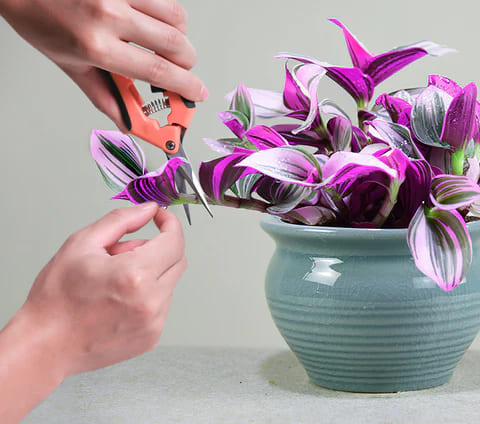
To propagate, simply snip a healthy stem, remove the bottom leaves, and place it in water or directly into soil. Within a couple of weeks, roots will develop, and you’ll have a brand-new plant.
I’ve propagated mine so many times that I’ve given away countless cuttings to friends, and every single one has taken off beautifully.
6. Fertilizing – A Little Goes a Long Way
This plant doesn’t need heavy feeding, but a little boost during the growing season makes a difference. I use a diluted liquid fertilizer once a month in spring and summer to keep it thriving.
Avoid overfeeding, as too much fertilizer can cause weak, leggy growth instead of the compact, vibrant look you want.
7. Common Issues and How to Fix Them
Even though Tradescantia Nanouk is low-maintenance, it can run into a few problems if not cared for properly. Here are some common issues and how to fix them:
- Fading colors: If your plant’s vibrant hues start disappearing, it’s probably not getting enough light. Move it closer to a bright window, and you should see improvement within a few weeks.
- Leggy growth: This usually happens when the plant isn’t pruned regularly or doesn’t get enough sunlight. Give it a trim and make sure it’s in a bright location.
- Mushy stems or root rot: Overwatering is the likely culprit. Trim off any affected areas, let the soil dry out, and adjust your watering habits.
